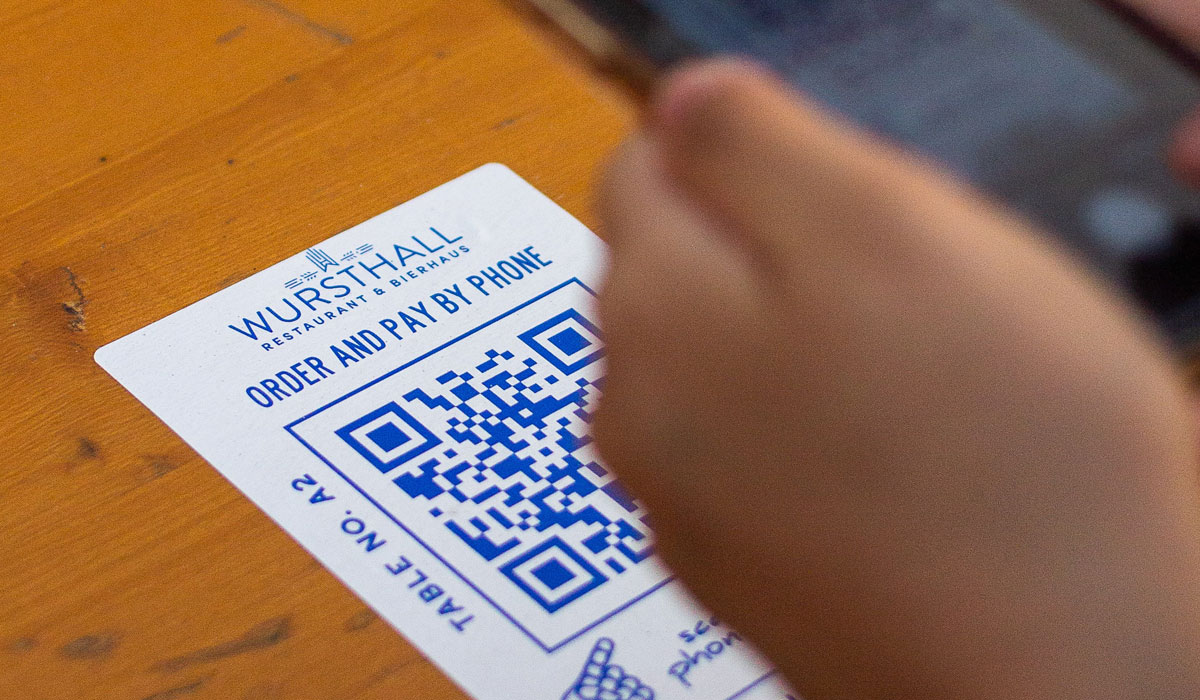Rising from the forgotten-technology ashes, the QR code became ubiquitous in quick service restaurants during the pandemic. The use of these black and white, matrix-like barcodes skyrocketed in 2020, showing up nearly everywhere from restaurant storefronts and countertops to tables and printed materials. Now that diners have become accustomed to this contactless technology, restaurants can combine QR codes with out-of-home (OOH) advertising to create frictionless experiences and drive customers to the conversions of their choosing.
Obscure No More: The Resurgence of QR Codes
QR (or Quick Response) codes entered the scene in 1994 when a Japanese automotive company created the two-dimensional barcode to keep its assembly line running efficiently. After seeing a rise in popularity with the mass use of smartphones in the early 2010s, QR codes slid into obscurity in the U.S., becoming almost obsolete. That is until 2020 when pandemic health and safety measures necessitated the demand for touch-free solutions, particularly in dining settings.
Yet, even as most dining restrictions have been lifted, and people continue moving about, the convenience of QR codes and their rise in mainstream use means these scannable codes aren’t going anywhere.
In fact, late last year Statista estimated that some 11 million U.S. households would use a QR code by the end of 2020. In addition, 83 percent of respondents in a Sept. 2020 survey from MobileIron said they’ve scanned a QR code, while 67 percent replied QR codes made life easier in a touchless world. That ease of use is one reason for the recent QR code rise, which according to cumulative data from Blue Bite, saw a 94 percent growth in the number of interactions from 2018 to 2020. So, how else can quick-service restaurants capitalize on scan-happy consumers? Look no further than OOH advertising.
Boost Your Marketing Mix with QR Codes for OOH
Once simply a quirky tech add-on for signs, QR codes are now a leading marketing and commerce tool. We’ve seen an untold number of physical menus swapped out with QR codes, driving diners to digital menus and smartphone scans facilitating contactless ordering and payment. We’re also seeing scannable codes infiltrate other marketing efforts. They’re being used by brands in social media, print advertising, storefront, and OOH campaigns, on counter displays and product labels to virtually engage customers.
Basically, if a restaurant can create a destination, QR codes can get diners there—be it to an eatery’s Instagram reels or TikTok page, daily specials, chef profile, loyalty program, or seasonal promotions. The days of simply linking to a website’s homepage are gone. QR codes are being used to take customers and passersby to hyper-specific online destinations that are easy to update and tailored to specific campaigns.
For instance, one restaurant can use multiple QR codes in multiple locations. A QR code included on a bus bench outside a conference center could drive to takeout and delivery options, while a QR code featured on transit stations near the restaurant might drive people to limited-time promotions or seasonal menus. QR codes gives OOH advertisers the agility to create unique, timely, and hyper-targeted ads to engage specific audiences with different calls to action depending on where they are.
Amplifying Digital Marketing Efforts with OOH QR Codes
Quick-service restaurants can leverage QR codes across outdoor media to create dynamic, multi-channel ad experiences that drive customers to websites, apps, social media accounts, and storefronts. By creating interactive QR code-driven campaigns across static and digital OOH, including street kiosks, bus shelters, urban panels, and billboards, eateries can reach consumers on their path to purchase.
The flexibility of both QR codes and OOH mean brands can create landing pages with specific goals in mind and quickly launch outdoor ad campaigns that land potential diners right away. To locate their ideal OOH media and locations, quick-serves are turning to modern OOH buying platforms that enable accurate, actionable measurement with or without codes and coupons.
However, by incorporating QR codes into OOH advertising, and with the help of these OOH platforms, restaurants can gain additional insight into exactly where dining patrons are coming from and which campaigns are drumming up the most business. Let’s say you are using a QR code on a digital kiosk as a coupon delivery mechanism. By creating unique ads around different coupons and locations that prompt passersby to scan a QR code to redeem and order, restaurants can track what specific promotions and ad locations are leading to the most sales.
With QR codes and OOH ads being equally unfussy to measure and interchange, quick-service brands can not only easily measure conversion rates with online OOH buying platforms, but they can also quickly change out and alter ads to boost campaign success.
Simply put: QR codes are here to stay. As quick-serves turn to outdoor ads to drive traffic, take-out orders, promotions and other brand engagement, QR codes are a crafty (and convenient) way to up level OOH ad campaigns. Keep in mind that while consumers have embraced the convenience of contactless interactions, meaningful customer connections are as important as ever. That being said, service and creativity in both the physical and digital worlds are now even more crucial to winning over diners.
Matthew O’Connor is the CEO and Cofounder of AdQuick.com, the first platform to allow marketers and agencies to complete the entire process of planning, buying, executing, and measuring out-of-home (OOH) advertising campaigns anywhere in the U.S. and across the globe.











